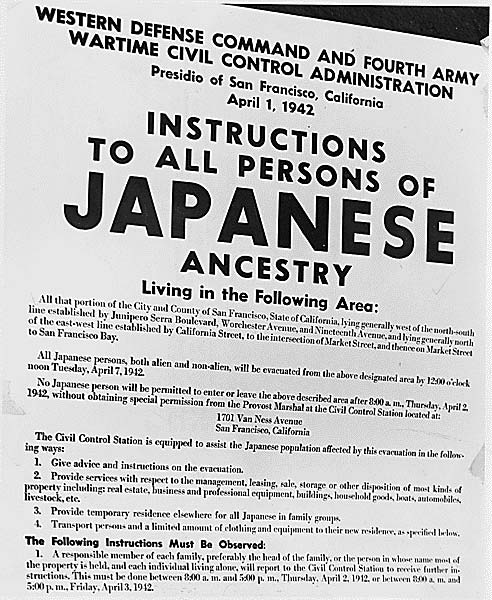 The U.S. Executive Order 9066 was signed by President Franklin Roosevelt during World War II on Feb. 19, 1942. It authorized the Secretary of War to designate specific areas in the country as military zones. The E.O. 9066 eventually resulted to the relocation of several Japanese-Americans to detention camps.
The U.S. Executive Order 9066 was signed by President Franklin Roosevelt during World War II on Feb. 19, 1942. It authorized the Secretary of War to designate specific areas in the country as military zones. The E.O. 9066 eventually resulted to the relocation of several Japanese-Americans to detention camps.
Details
The E.O. 9066 gave the U.S. armed forces leaders and Secretary of War the authority to declare particular areas in the country as military areas. However, the order did not specify any ethnic group or nationality that may be excluded. Eventually, this ordinance applied to a third of the U.S. land area, which was mainly in the West, and it was used against individuals with an ancestry considered as the country’s “foreign enemies” such as Korean and Japanese.
Detainment
With the issuance of this order, several Japanese-Americans were detained, and about 12,000 Japanese were held in detainment camps for the entire duration of the World War II. Of all the people interned, about 62 percent were Nisei, or children of Japanese immigrants born in the U.S. Another group of people that were detained were Sansei, who are considered American citizens because they were the children of Nisei. The rest of these individuals were Issei or resident aliens and Japanese immigrants.
The most affected individuals were Japanese-Americans, and everyone with Japanese ancestry were forced to leave southern Arizona and the West Coast. Meanwhile, only a few of the 140,000 Japanese-Americans residing in Hawaii were detained.
Aside from these groups of people that were forced to remain at internment camps, Americans of German and Italian ancestry were also affected by the EO 9066. In fact, the ordinance implied that several detained Jewish refugees came from Germany. Thus, the U.S. government was not able to differentiate them from ethnic Germans and Jews. Some of these individuals were only interned for a brief period, while others were held in until the end of World War II.
Although these individuals experienced difficulties in internment camps, they were provided with their basic needs on a daily basis. Henry Stimson, who was the Secretary of War, was tasked to assist these detained groups of people with their needs including food, transport, shelter, as well as other accommodations.
Consequences
On February 19, 1976, the EO 9066 was formally revoked by Gerald Ford. In 1980, President Jimmy Carter issued the signed legislation that created the CWRIC, which was tasked to conduct a governmental study of the EO 9066, other wartime orders, and the impact of these on Japanese-Americans situated in Pribilof Islands and West Coast of the country.
After the studies conducted by the commission, it concluded that the detainment of Japanese-Americans was not justified and conducted fairly by military necessity. This report also determined that the fate of those interned was based on war hysteria, failure of just political leadership, and race prejudice. Hence, the commission presented their recommendation for an official government apology, public education fund and redress payments that amounted to $20,000 to all the survivors. This decision aimed to send the message that such injustice would never happen ever again.